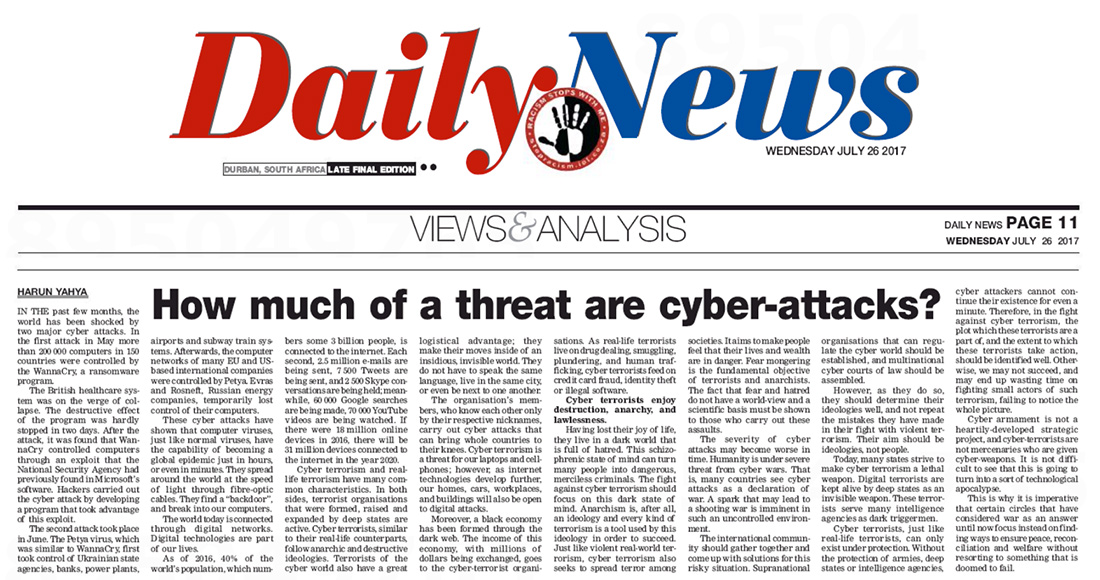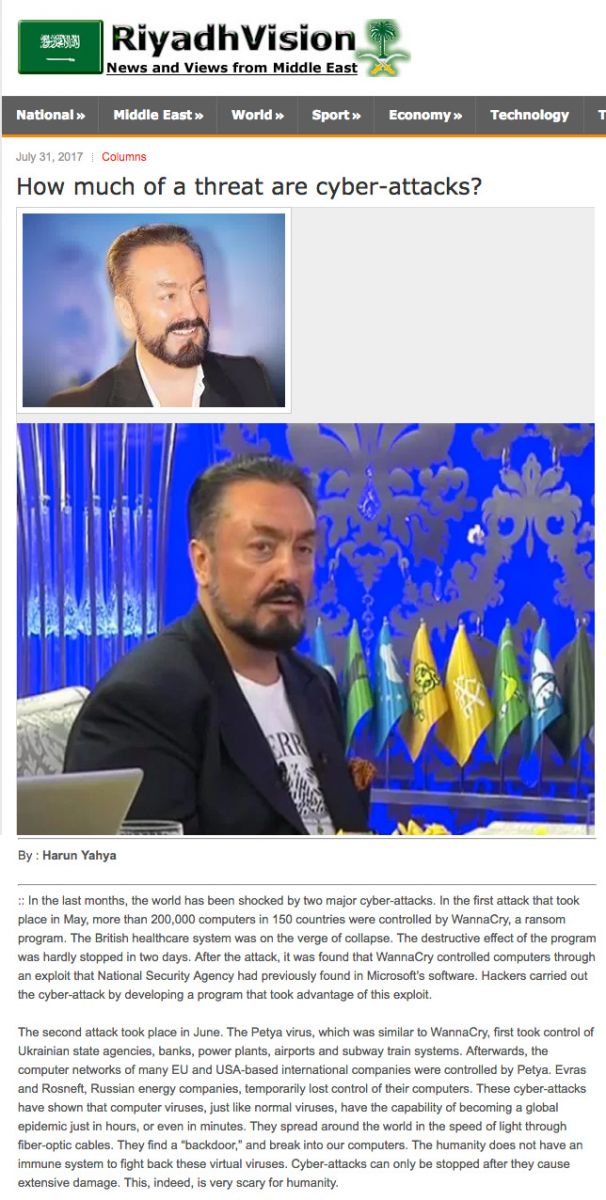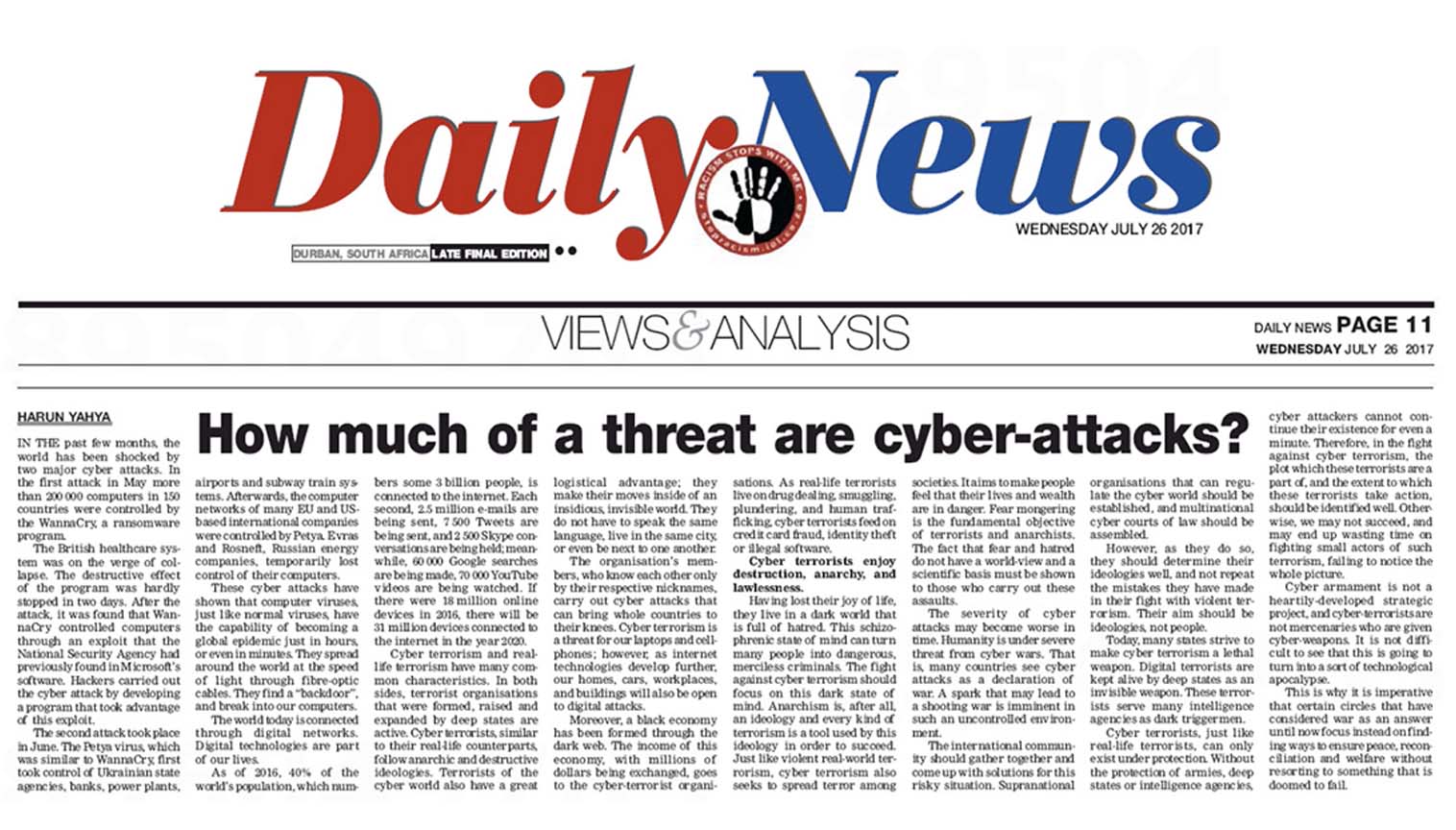
In the last months, the world has been shocked by two major cyber-attacks. In the first attack that took place in May, more than 200,000 computers in 150 countries were controlled by WannaCry, a ransom program. The British healthcare system was on the verge of collapse. The destructive effect of the program was hardly stopped in two days. After the attack, it was found that WannaCry controlled computers through an exploit that National Security Agency had previously found in Microsoft’s software. Hackers carried out the cyber-attack by developing a program that took advantage of this exploit.
The second attack took place in June. The Petya virus, which was similar to WannaCry, first took control of Ukrainian state agencies, banks, power plants, airports and subway train systems. Afterwards, the computer networks of many EU and USA-based international companies were controlled by Petya. Evras and Rosneft, Russian energy companies, temporarily lost control of their computers. These cyber-attacks have shown that computer viruses, just like normal viruses, have the capability of becoming a global epidemic just in hours, or even in minutes. They spread around the world in the speed of light through fiber-optic cables. They find a “backdoor,” and break into our computers. The humanity does not have an immune system to fight back these virtual viruses. Cyber-attacks can only be stopped after they cause extensive damage. This, indeed, is very scary for humanity.
The world today is connected through digital networks. Digital technologies are part of our lives. As of 2016, 40% of the world’s population, which amounts to some 4 billion people, is connected to the Internet. Each second, 2,5 million e-mails are being sent, 7,500 Tweets are being sent, and 2,500 Skype conversations are being held; meanwhile, 60,000 Google searches are being made, 70,000 YouTube videos are being watched. If there are 18 million online devices in 2016, there will be 31 million devices that will be connected to the Internet in the year 2020.
Cyber-terrorism and real-life terrorism have many common characteristics. In both sides, terrorist organizations that was formed, raised and expanded by deep states are active. Cyber-terrorists, similar to their real-life counterparts, follow anarchistic and destructive ideologies. Terrorists of the cyber-world also have a great logistical advantage; they make their moves inside of an insidious, invisible world. They do not have to speak the same language, live in the same city, or even be next to one another. The organization members, who know each other only by their respective nicknames, carry out cyber-attacks that can bring whole countries to their knees. Cyber-terrorism is a threat for our laptops and cellphones now; however, as Internet technologies develop further, our homes, cars, workplaces, and buildings will also be open to digital attacks.
Moreover, a black economy has been formed through the dark web. The income of this economy, in which millions of dollars being exchanged, goes to the cyber-terrorist organizations. As real-life terrorists live on drug dealing, smuggling, plundering, and human trafficking, cyber-terrorists feed on credit card fraud, identity theft or illegal software. Criminal precautions are not enough in coping with both terrorist groups. In order to be successful in dealing with cyber-terrorism, the ideology of these terrorists should be coped with. Cyber-terrorists enjoy destruction, anarchy, and lawlessness. Having lost their joy of life, they live in a dark world that is full of hatred. This schizophrenic state of mind can turn many people into dangerous, merciless criminals. The fight against cyber-terrorism should focus on this dark state of mind. Anarchism is, after all, an ideology and every kind of terrorism is a tool used by this ideology in order to succeed. Just like violent real-world terrorism, cyber-terrorism also seeks to spread terror among societies. It aims to make people feel that their lives and wealth are under danger. Fear mongering is the fundamental objective of terrorists and anarchists. The fact that fear and hatred do not have a world-view and a scientific basis must be shown to those who carry out these assaults.
The severity of cyber-attacks may become worse in time. Humanity is under severe threat from cyber wars. That is, many countries see cyber-attacks as a declaration of war. A spark that may lead to a shooting war is imminent in such uncontrolled environment. The international community should gather together and come up with solutions for this risky situation. Supranational organizations that can regulate the cyber-world should be established, and multinational cyber courts of law should be assembled. States should act in cooperation against their common enemies. However, as they do so, they should determine their ideologies well, and not repeat the mistakes they have made in their fight with violent terrorism. Their aim should be ideologies, not people.
Today, many states strive to make cyber-terrorism a lethal weapon. Digital terrorists are kept alive by deep states as an invisible weapon. These terrorists serve many intelligence agencies as dark triggermen. Cyber-terrorists, just like real-life terrorists, can only exist under protection. Without the protection of armies, deep states or intelligence agencies, cyber-attackers cannot continue their existence for even a minute. Therefore, in the fight against cyber-terrorism, the plot which these terrorists are a part of, and the extent to which these terrorists take actions should be identified well. Otherwise, we may not succeed, and may end up wasting time on fighting small actors of such terrorism, failing to notice the whole picture.
Cyber-armament is not a heartily-developed strategic project, and cyber-terrorists are not mercenaries who are given cyber-weapons. It is not difficult to see that this is going to turn into a sort of technologic apocalypse that will hurt everyone in the process. This is why it is imperative that certain circles that has considered wars as an answer until now, focuses instead on finding ways to ensure peace, reconciliation and welfare, without resorting to something that is doomed to fail.
Adnan Oktar's piece in Daily News & Riyadh Vision:
http://www.riyadhvision.com.sa/2017/07/31/how-much-of-a-threat-are-cyber-attacks/



